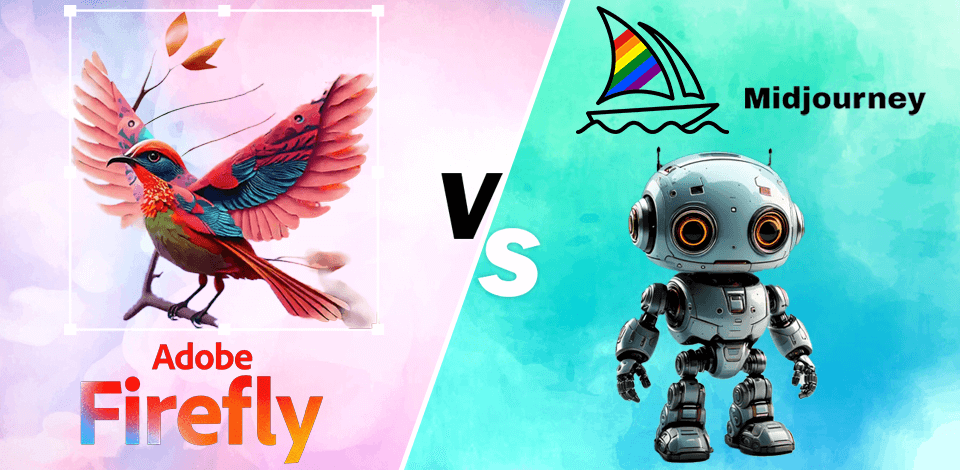
I’ve started using AI tools a lot more in my photo and design work at FixThePhoto. These tools help me work faster and stay creative when I’m making pictures for blogs, fixing up photos, or creating visuals for videos.
Adobe Firefly is my favorite. It works well with Photoshop and Illustrator, and the latest update made it even better: you can now use it on its own as a web app. It also offers more control over importing, how layers are used, and styles.
Midjourney, on the other hand, is a bit different. You use it through Discord, which was kind of strange at first, but now I’m used to it. You type in ideas, and it gives you pictures. Then you can choose to make the images bigger or try different versions. It even lets you zoom out or crop images all in one place.
To compare Adobe Firefly vs Midjourney, I used them for a few weeks to see how good they are at creating visual outputs, editing, and printing. I rated them in four categories: how easy they are to use, how good the pictures look, customization, and price.
If you’re creating things for work or need high-resolution images that are safe to use legally, Adobe Firefly is the better choice. It’s perfect for people who already use other Adobe software and want more control and options, especially for print or vector art.
|
|

Adobe Firefly |

Midjourney |
|
Key features
|
|
|
|
Best for
|
Designers, marketers, agencies, commercial use
|
Artists, concept creators, game designers, experimental users
|
|
Pricing
|
Free plan + from $4.99/mo
|
Paid plans only, starts at $10/mo
|
|
Pros
|
✔️ Adobe app integration
✔️ Commercial-safe outputs ✔️ Web + app versions ✔️ Customizable AI layers ✔️ Vector + video formats |
✔️ Eye-catching images
✔️ Rapid image creation ✔️ Artistic flexibility ✔️ Frequent model updates |
|
Cons
|
❌ Less artistic flair
|
❌ No vector/video export
❌ License limits for commercial use |
|
AI models
|
Proprietary, Adobe-trained
|
Proprietary, in-house models
|
|
Image formats
|
PNG, JPG, PSD, SVG
|
PNG, JPG
|
|
Video generation
|
✔️
|
❌
|
|
Vector generation
|
✔️
|
❌
|
|
Platform
|
Web + Adobe apps
|
Discord only
|
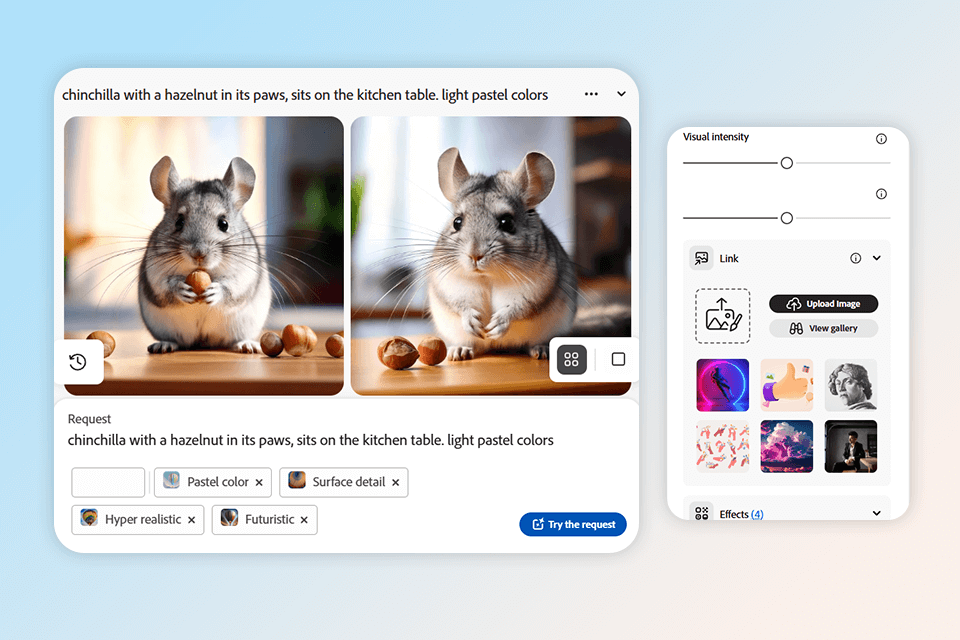
Adobe Firefly is great if you want clear pictures that are safe to use for work or school projects. It uses images from Adobe Stock, which are all commercial-safe to use.
The latest update made it even better. Now, it can turn your text into pictures with better lighting, shadows, and depth, and new cool presets like “Sketch Draft,” “3D Lighting” are available too. Also, you can easily change how your art looks - there are options like photorealism, digital painting, vector outlines, or stylized filters.
Adobe Firefly highlights:
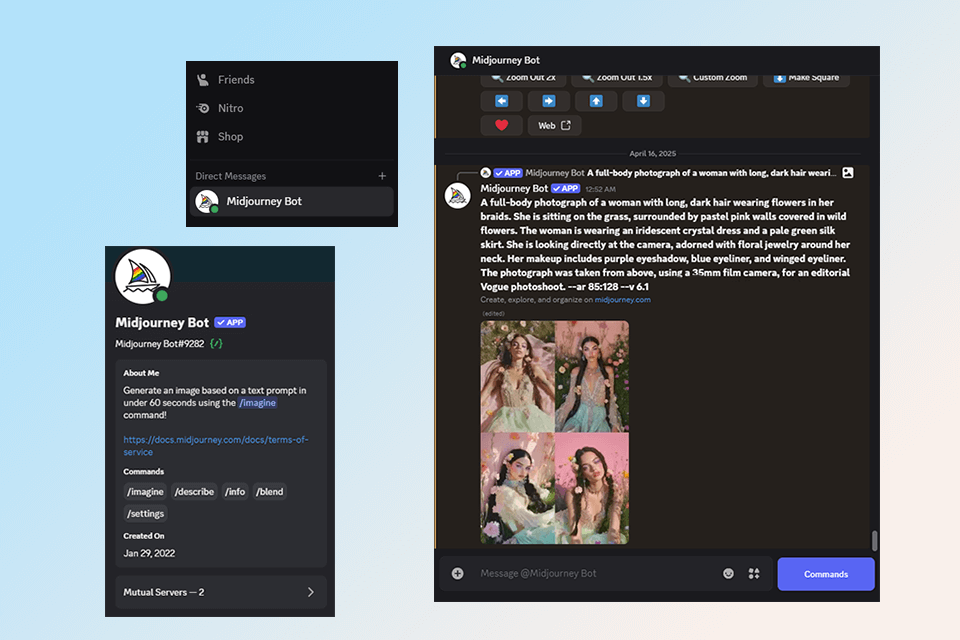
If you want wild and creative pictures, Midjourney is what you need. It makes content that looks like fantasy art. Artists and game designers love it because the pictures are so unique and magical.
But sometimes, Midjourney doesn’t make exactly what you asked for – it might surprise you, which can be fun, though some people might find it annoying.
Midjourney highlights:
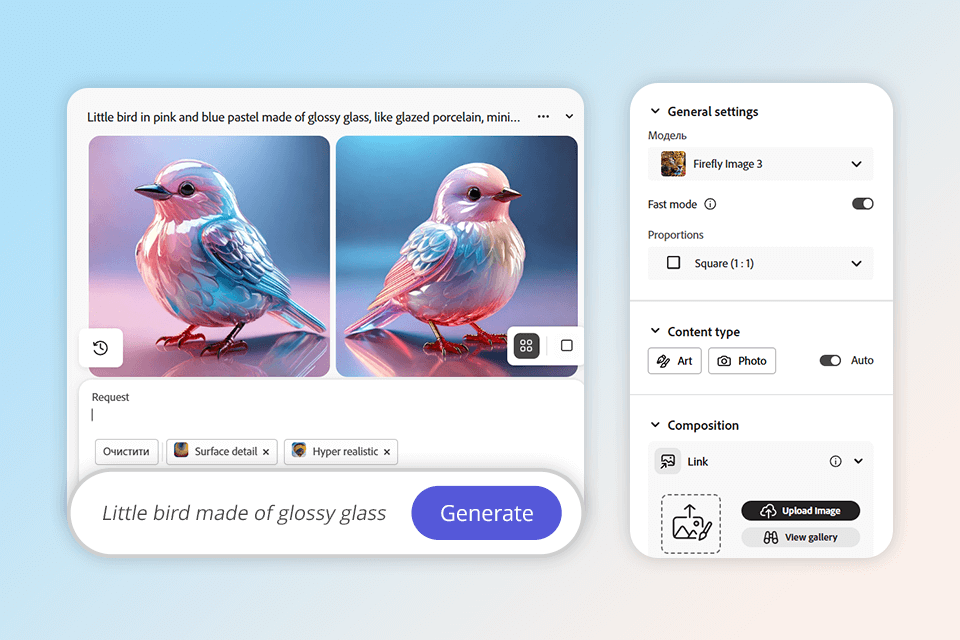
Adobe Firefly feels super user-friendly if you’ve ever used Photoshop or other Adobe programs. You can use Firefly through Photoshop, Illustrator, or just go to the Firefly website. They made it even easier now: you can see your image change in real-time, drag-and-drop, and play with sliders for style. It’s fast, intuitive, and simple.
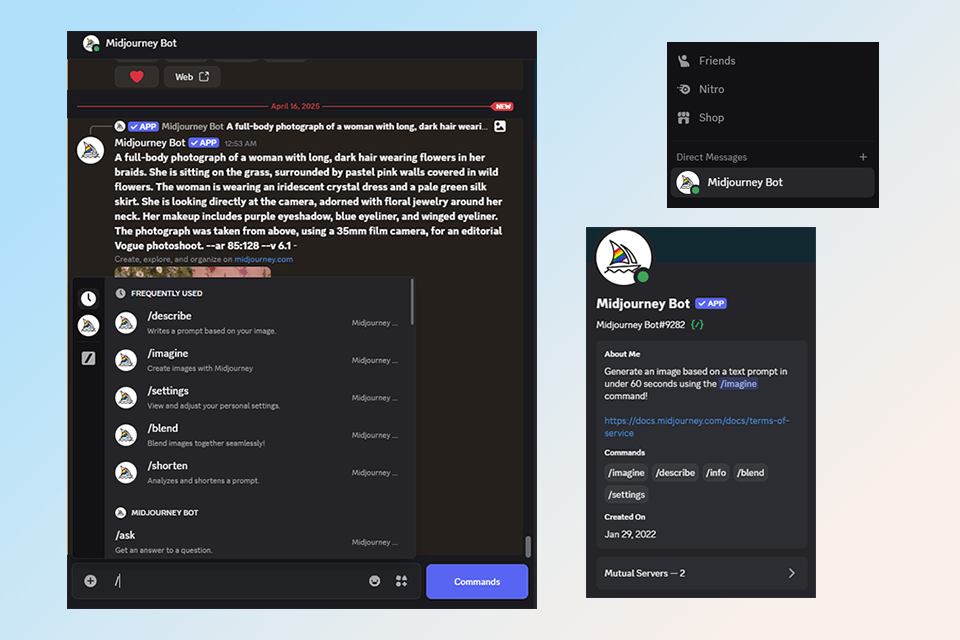
Midjourney works only in Discord. You just type what you want, and an AI bot makes your images. When comparing Adobe Firefly and Midjourney, it might seem weird at first, but once you get used to it, it’s fun.
It feels like talking to a creative robot that helps you visualize whatever is on your mind. However, since it doesn’t have normal buttons and menus, you’ll need to learn how it works a bit, which may slow down the creation process at first.
One time, I was working on a fashion blog, and the model’s dress got cut off in the photo. Normally, retouching would be a pain, but Adobe Firefly’s Generative Expand, a part of the AI photo editor, added the missing part of the dress perfectly, with the same fabric look and lighting.
Another time, I had a product flat lay photo, but there was some mess in the background, so I used Generative Fill to erase it, and it looked like it was never there.
One of the things I liked the most was that all this editing stays right inside Adobe programs. I can quickly make changes, send the file to Illustrator, and keep everything in layers so it’s easy to adjust later. This is really helpful when I’m working with clients who keep asking for tiny changes in the projects, as it saves a lot of time.
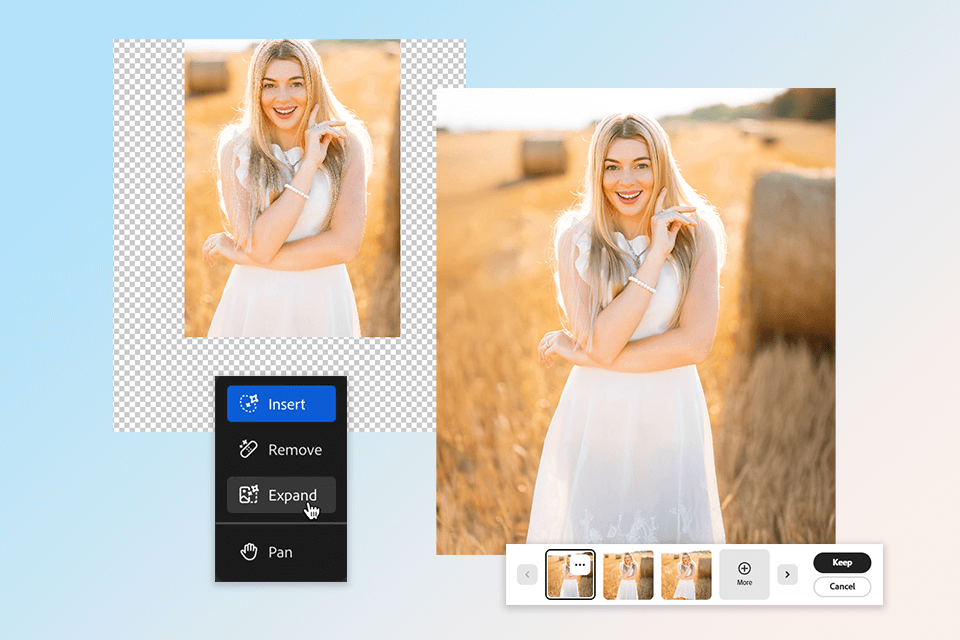
Now, Midjourney is a different kind of tool. Although it’s great for generating cool pictures from text prompts, it’s not meant for editing. Once it gives you a picture, you have to fix things in Photoshop yourself because there are no tools built in to fix mistakes. If something looks weird, you have to generate a picture again and hope it turns out better next time.
If you’re generating something where you need to make changes fast and often, Adobe Firefly is way better because it makes editing super simple and smooth.
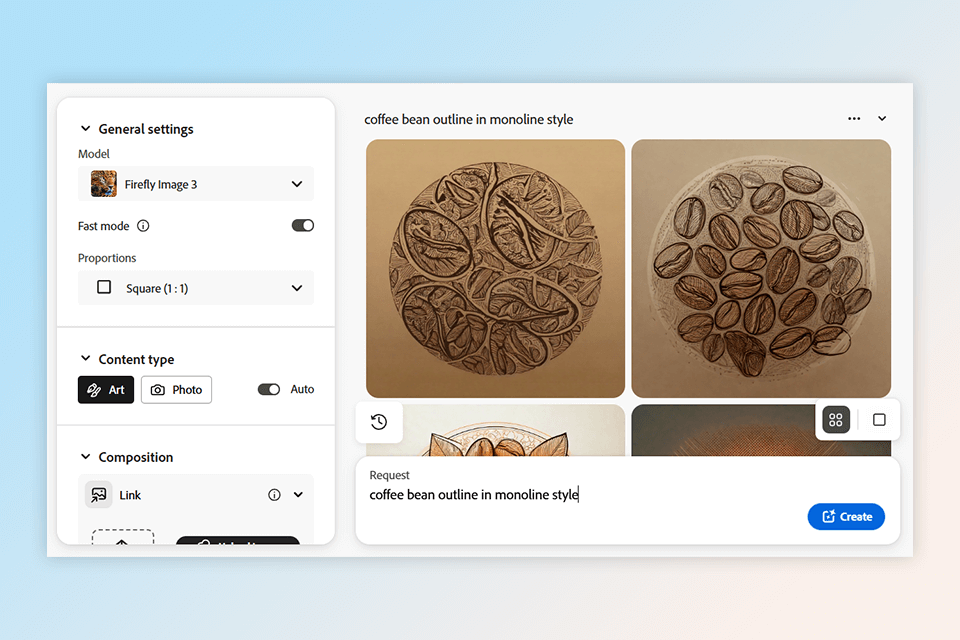
Using Firefly with Illustrator has been a game-changer for me. I can now turn words into editable vector designs fast, something I didn’t think I’d use this much.
I worked on a rebrand for a small café and needed some flowery plant-style borders and simple coffee-themed logos. All I did was type in things like “vintage floral border” and “coffee bean drawing in monoline style,” and Firefly gave me clean, ready-to-use vector art in just seconds.
I could open the designs in Illustrator, and everything was already in layers, so I didn’t need to spend time fixing or separating anything. It was all ready to go for posting online.
When comparing Firefly and Midjourney, Midjourney AI is fantastic for making artsy pictures, but it only generates raster images.
I once tried using it to come up with ideas for some T-shirt designs, but when I needed to turn those into sharp, editable files, I had to manually trace them in Illustrator. That took a lot of extra time and didn’t always look perfect.
Adobe Firefly is built using special Adobe models trained with images from Adobe Stock that were ethically sourced. That means I can trust that anything I make with Firefly is safe to use in ads or client projects. I’ve already used it to make designs for sponsored social posts and ad layouts, and I never have to worry about breaking copyright rules.
Midjourney makes beautiful art, but I’m never totally sure if I’m allowed to use the images for work. It’s amazing for personal use or just playing and finding inspiration, but when I need to make something for a brand or business, I stick with Firefly.
When comparing Adobe Firefly and Midjourney in terms of integrations, Firefly works right inside the Adobe apps I already use, like PS, Illustrator, and even After Effects. That means I don’t need to switch between a bunch of programs or change file types. I’ve used it to make blog images, client banners, and even designs for product packaging, and I never had to export anything.
Midjourney is different. I still use it when I just want to try out fun ideas or get creative without thinking too much about the technical stuff. I do have to save the image and edit it later in Photoshop, but I don’t mind.
Adobe Firefly comes with most Creative Cloud plans, so if you already use Photoshop or Illustrator, you probably already have it. Firefly uses a credit system, which gives you a certain number of uses each month, depending on your plan. I usually don’t run out, but if I’m working on something big, I sometimes need to upgrade for more. Here’s how the credits work:
What’s nice is that the credits can be used in any Adobe app. Plus, you’re not just paying for the AI, you’re getting full creative programs too, which makes it worth it.
Midjourney is different. It’s subscription-only, which means you have to pay to use it, as there’s no free version. The price depends on how fast and how often you want to make images, and if you want to keep them private.
Here’s the current pricing:
If you use Midjourney a lot, the price is okay. But if you only want to make a few images now and then, it can seem kind of expensive. Unlike Firefly, you’re only paying for the AI art; it doesn’t come with design tools or extra apps.
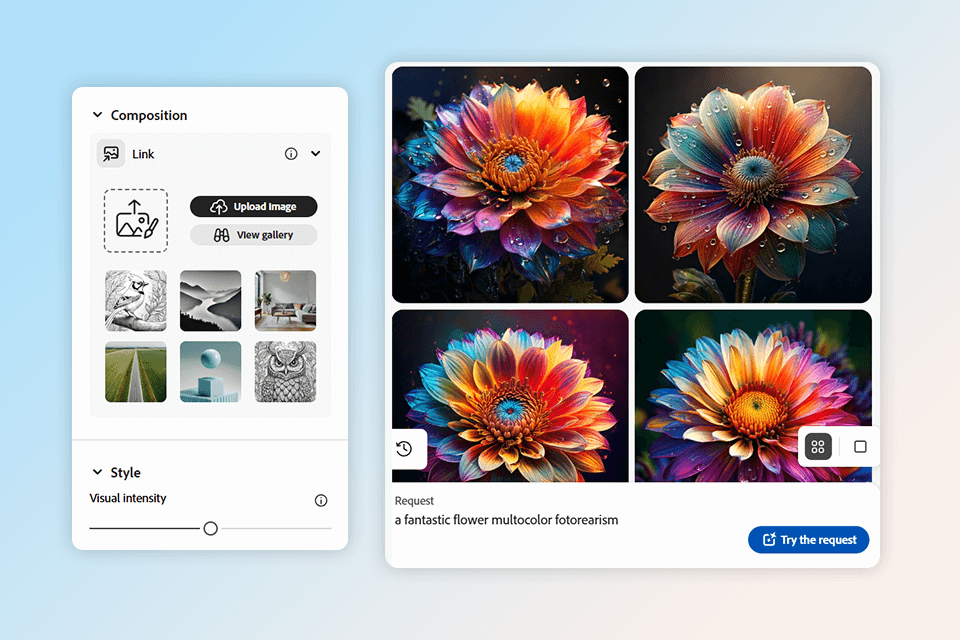
One of the trickiest things about using AI art tools is getting the pictures to look consistent, especially when I’m making a set of images that all need to match. That’s where Adobe Firefly really stands out. When I use the same prompt, the AI art generator gives me almost the same image again, unless I change something on purpose.
This helps a lot when I’m creating social media posts, product designs, or anything that needs to have a similar look. And because I use both Photoshop and Illustrator, I can keep editing and layering the art without losing control of the generation.
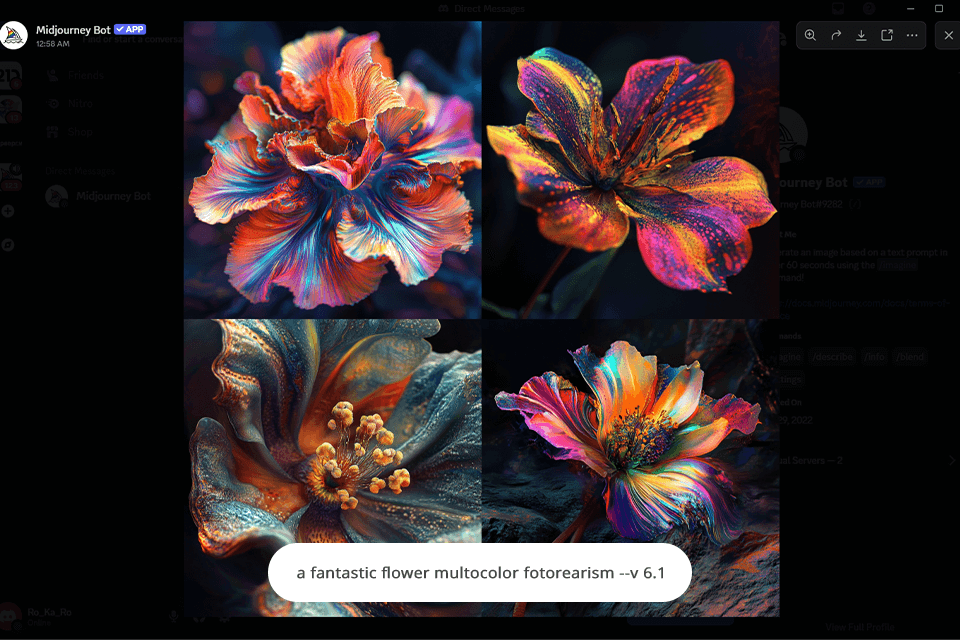
Compared to Adobe Firefly, Midjourney is a bit different. It treats every prompt like a brand-new idea, even if you copy and paste the same words. That makes it fun and exciting because you never know what you’ll get, but it also means it’s not very reliable if you need all your images to look the same.
When testing Adobe Firefly and Midjourney, I wanted to find out which one works better for digital artists, designers, and content creators like me. Since I use AI tools all the time for generating blog images and product mockups, I decided to really dig in and compare them in real projects, from first ideas to finished designs.
To make sure I wasn’t just judging based on my own opinion, I also talked to other people on the FixThePhoto team. They included pro photo editors, designers, and content creators. I even asked clients who use AI for their projects and read what artists online were saying about both tools.
Step 1. AI generation tests. I used the same prompts in both Firefly and Midjourney to see how they handled different kinds of images:
Firefly delivered neat, well-organized images, while Midjourney generated more artsy, textured results, which looked cool but less structured.
Step 2. Editing & refinement. With Firefly, I used tools like Generative Fill and Expand inside Photoshop to make quick changes. It made edits look real and saved a lot of time. With Midjourney, I had to do all the changes manually in Photoshop because it doesn’t have editing tools built in.
Step 3. Workflow speed. I tested how fast both Midjourney and Adobe Firefly worked for different image sizes and styles. As I mentioned before, Firefly is built into Adobe apps like Photoshop and Illustrator, so I could do everything in one place. I could even see changes right away, which made working faster.
Midjourney works through Discord, so I had to download the images and open them in other apps to keep working. The art it makes is amazing, but it's a bit slower if you need to keep changing things quickly.
Step 4. Prompt control. Controlling the look of your image is really important. Firefly and Midjourney do this in different ways.
Adobe Firefly:
Midjourney:
After trying out Adobe Firefly and Midjourney, and hearing what other people, both pros and everyday users, had to say, here’s what I discovered.
Adobe Firefly is great when you need clean, pro-looking results. It works well with other Adobe programs, so it’s perfect if you’re generating content for work, school projects, or anything commercial.
Midjourney is more about fun and creativity. It lets you play around and come up with wild ideas. It’s awesome for drawing cool concept art, exploring different looks, or just being creative for fun.